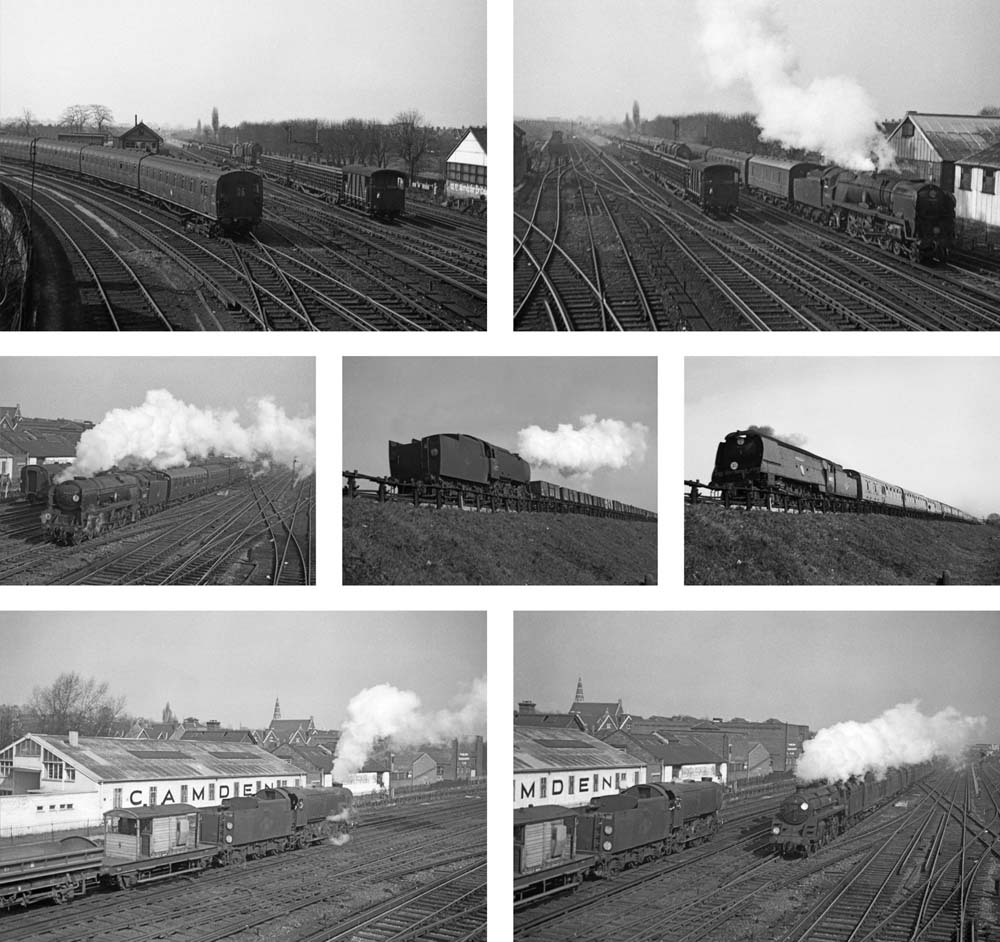

This set of pictures is interesting as they show how engineering works were usually carried out on main lines over fifty years ago, in this case on 24 March 1963 in the Wimbledon area of South West London. The priority then was to try to keep as far as possible to the normal service and it was very rare for buses to be substituted. Of course work today is carried out on a grand scale using large machinery which is often out of gauge and blocks adjoining tracks. Also the split of functions now encourages the easy option of line closures, compared to when there was one railway. Looking at these images it seems that just as many people are required trackside now as was the case then, despite greater mechanisation now. The image captions tell the tale of that calm, mild Sunday morning over fifty years ago.
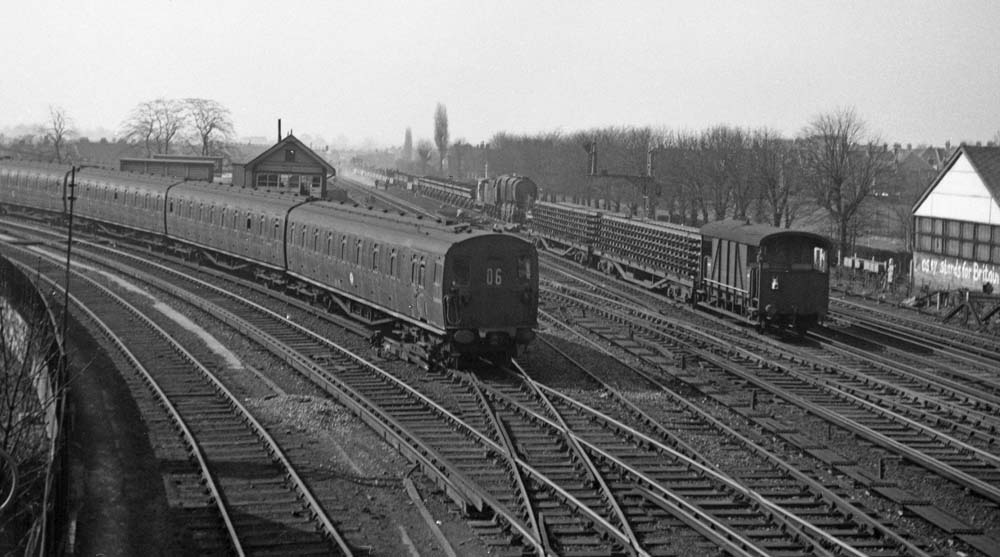
4 EPB Unit No 5120 comes off the line from Sutton via Wimbledon Chase with a stopping train to London, Waterloo. In the background Q1 class 0-6-0 No 33032 stands on the up fast line with a train of wagons from which the track gang are discharging ballast onto the track base of the down main line from which the old track has been removed. Nearer to the engine is a row of ballast wagons, suggesting that maybe these contain the new ballast and the men are removing the old. Nearer to the camera is the new track waiting to be laid. Notice how close some of the workers are to the down slow line which was still in full use.

Work continues as a few minutes later Bulleid ‘BB’ class 4-6-2 No.34060 25 Squadron passes on the up slow line with the Sundays only 7.10 am Yeovil Town to Waterloo service which would have reversed at Yeovil Junction. Two lookout men can just be seen on the left near to Wimbledon C signal box, dating from 1929.
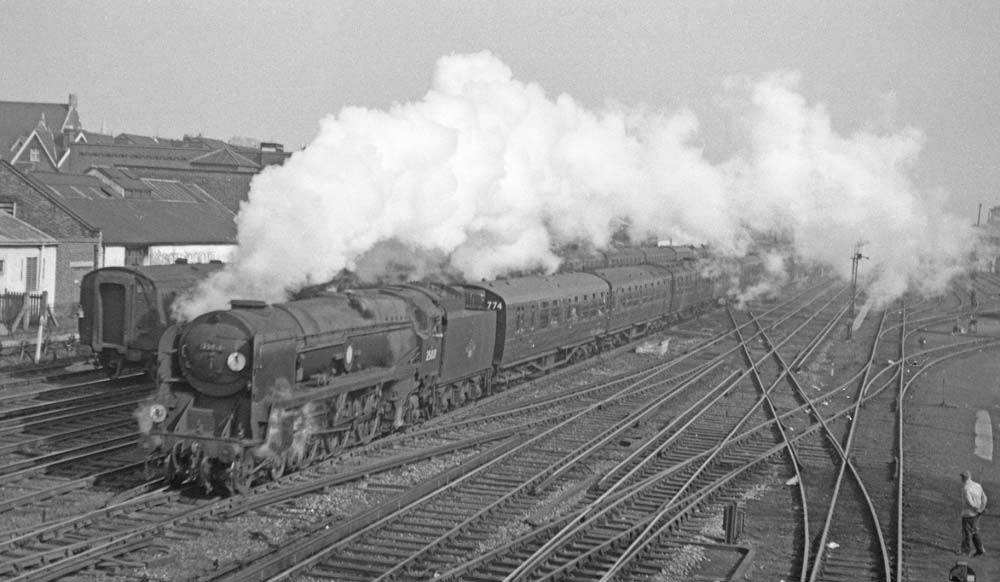
As the up Yeovil train passed I turned round to see a down steam hauled train approaching and this proved to be the 10.30 am Waterloo to Bournemouth West and Weymouth headed by Bulleid Merchant Navy class Pacific No 35018 British India Line. Running on the down slow line it was about to pass the scene of the relaying of the down fast line with the gangers and lookout men close to the running line and not a hi-viz jacket in sight!
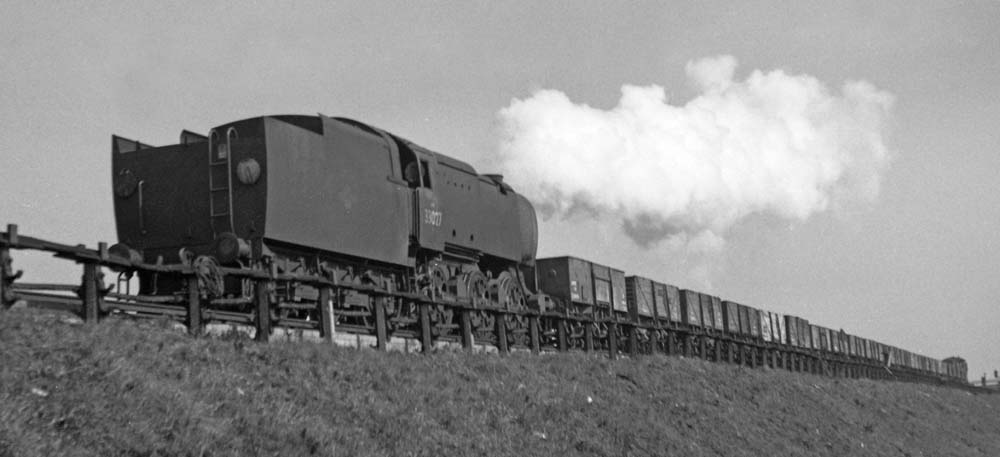
For the next two shots I cycled to a location just west of Raynes Park near to the Carter’s Seed factory. Here we see another Q1 class 0-6-0 Coffee Pot No 33027 on a long train of wagons, possibly from the site of the track works at Wimbledon.
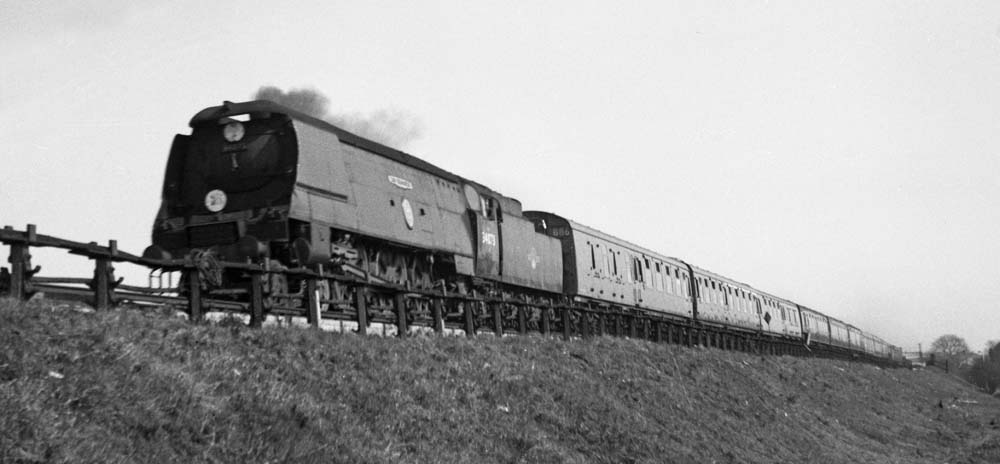
Shortly afterwards along came Bulleid unrebuilt BB class 4-6-2 No 34073 249 Squadron on the 11 am Waterloo to Exeter carrying portions for Plymouth and Ilfracombe. On Sundays this train was semi-fast calling at all principal stations as far as Exeter as opposed to weekdays when it called only at Salisbury and Sidmouth Junction before Exeter. Unusually it’s not Merchant Navy hauled, but instead has a Nine Elms light Pacific in charge.
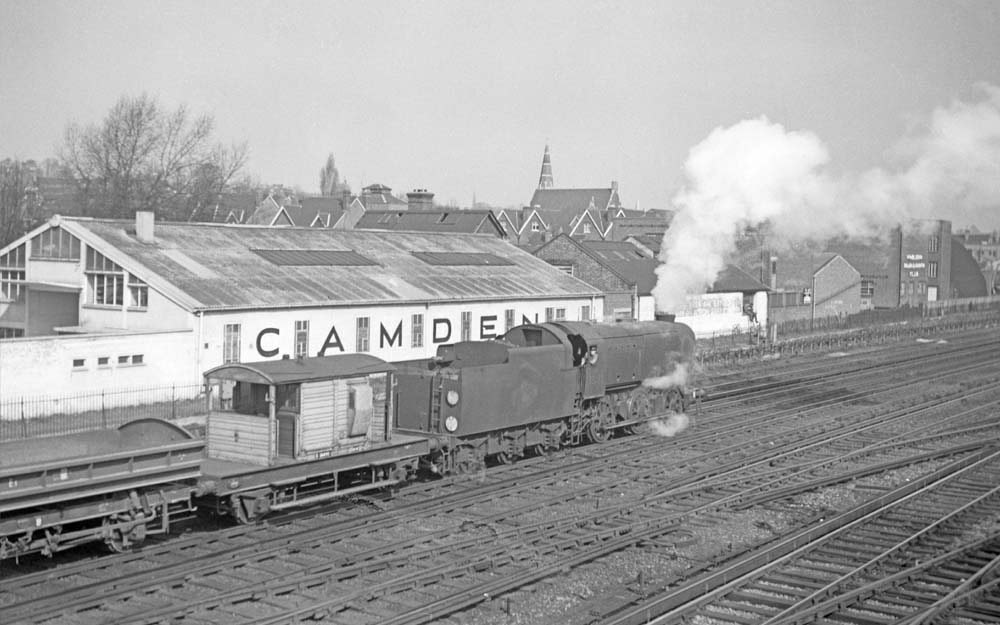
Back to Wimbledon now to see that 33032 had moved the now empty ballast wagons up towards Waterloo suggesting progress with the track laying. In the background is the footpath where I spent many happy hours photographing the passing steam hauled trains from 1961 until the end of steam in 1967.
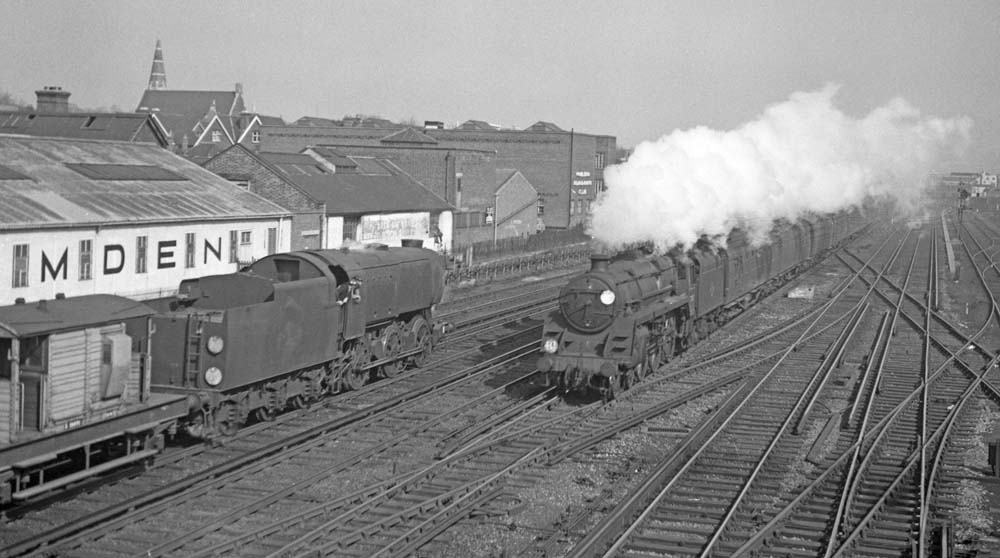
Finally a nice shot of BR Standard class 5 4-6-0 No 73085 on the 11.30 am Waterloo to Bournemouth West and Weymouth passing 33032 still standing on the up fast line with its wagons, the crew of which were about to wave to the driver of the Class 5 on the down slow. If you were travelling on the 11.30 am down you would be able to enjoy the ambience of Bournemouth Central station for no less than 41 minutes as this portion of the train waited for the arrival at 2.40 pm of the 12.30 pm Bournemouth Belle all-Pullman car train from Waterloo. No 73085 was a Nine Elms engine at that time but during the week the 11.30 down would normally be an Eastleigh Bulleid light Pacific.